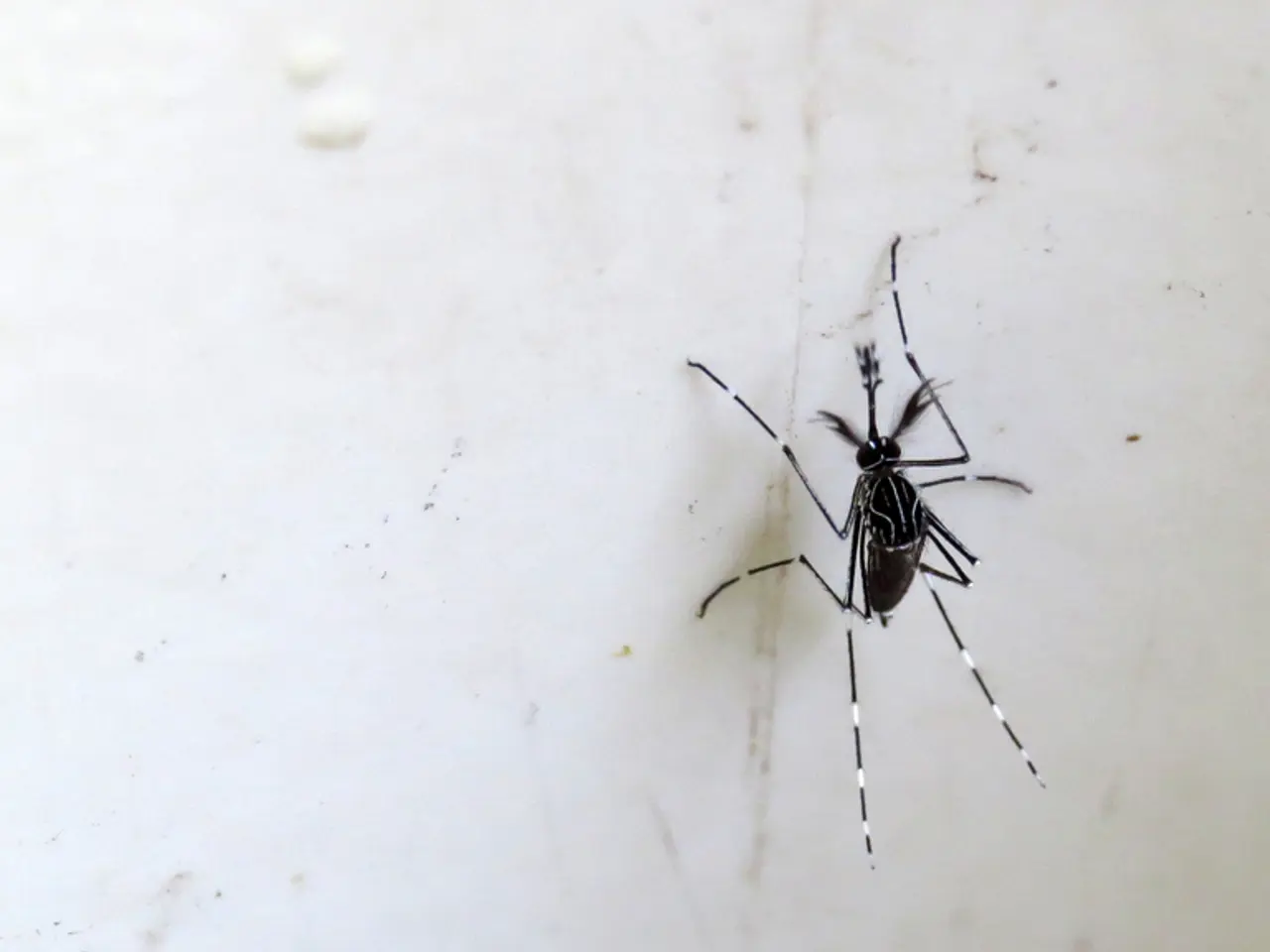West Nile Virus detected in Kentucky for the first time; authorities advise locals to adopt safety measures
Protect Yourself Against West Nile Virus: A Comprehensive Guide
A resident of Louisville, Kentucky, has been diagnosed with West Nile virus, marking the first confirmed human case of 2025 in the state. As the number of cases may increase, it's essential to take precautions to protect yourself against this mosquito-borne disease.
Beyond the usual advice, prevention methods for West Nile virus (WNV) include the following:
- Use of EPA-registered insect repellents: Repellents containing DEET, picaridin, IR3535, para-menthane-diol, oil of lemon eucalyptus, or 2-undecanone are proven safe and effective when used as directed. These repellents offer longer-lasting protection against mosquito bites. It's crucial to follow the label instructions for optimal safety and effectiveness.
- Personal protective clothing: Wearing lightweight, light-colored, long sleeves and long pants can help reduce mosquito bites, particularly during peak mosquito activity times (dawn, dusk, and early evening).
- Avoidance of outdoor exposure during mosquito peak activity periods: Limiting time outdoors during early morning, late afternoon, and evening reduces exposure to infected mosquitoes.
- Physical barriers: Ensuring window and door screens are intact, using bed nets, air conditioning, or fans to keep mosquitoes out of indoor spaces can provide additional protection.
- Environmental control measures: Eliminating mosquito breeding sites around homes by regularly emptying standing water from containers, flower pots, buckets, and bird baths; drilling holes in tire swings; keeping wading pools empty and turned over when not in use can help reduce mosquito populations. Using larvicides such as mosquito dunks in permanent water bodies like ponds can also aid in reducing mosquito populations.
- Community-level mosquito control programs: Participation in or support for local mosquito control efforts, including vegetation treatment near homes or larger standing water areas, which may require professional intervention, can help control mosquito populations.
- Blood and organ donation screening: Since WNV can be transmitted through blood transfusions or organ transplants, screening of donors is an important prevention strategy. People diagnosed with WNV should avoid donating blood for at least 120 days post-illness.
- Vaccine development is ongoing, but currently, no licensed vaccine for human use is available against WNV. Thus, prevention depends heavily on controlling mosquito exposure and bites.
In summary, to protect yourself against West Nile virus, it's essential to follow the usual advice and take additional precautions such as using EPA-registered insect repellents, wearing protective clothing, avoiding outdoor activities during peak mosquito-biting hours, and participating in community-level mosquito control programs. Louisville's Chief Health Strategist Connie Mendel urges everyone to protect themselves against mosquito bites.
[1] Centers for Disease Control and Prevention. (2025). West Nile virus: Prevention, diagnosis, and treatment. Retrieved from https://www.cdc.gov/westnile/prevention/
[2] Environmental Protection Agency. (2025). Insect repellents: Effective use against mosquitoes, ticks, and other pests. Retrieved from https://www.epa.gov/pesticide-registration/insect-repellents-effective-use-against-mosquitoes-ticks-and-other-pests
[3] World Health Organization. (2025). West Nile fever: Prevention and control. Retrieved from https://www.who.int/news-room/fact-sheets/detail/west-nile-virus
[4] Kentucky Department for Public Health. (2025). West Nile virus. Retrieved from https://dhph.ky.gov/dph/arboviral/Pages/west-nile-virus.aspx
[5] American Red Cross. (2025). West Nile virus. Retrieved from https://www.redcross.org/about-us/news-and-events/news/2025/west-nile-virus.html
Read also:
- Digestive issues: Understanding causes, remedies, and further details about acid reflux and excessive burping
- Exploring Botox as a Treatment for Interstitial Cystitis: Insights, Adverse Effects, and Further Details
- Information on Lucentis: Its Form, Strengths, Administration Method, and Additional Details
- Risk Factors for Developing Penile Cancer





